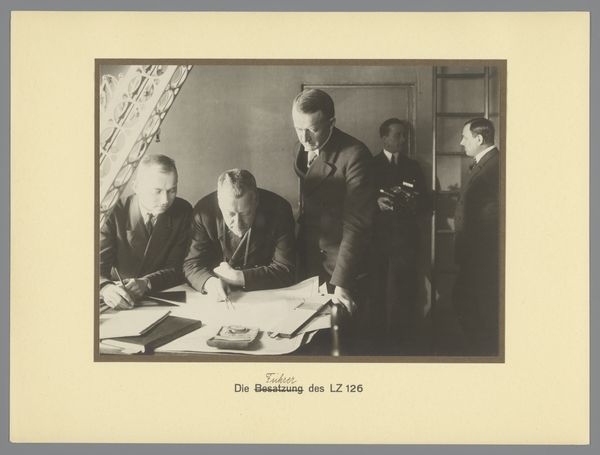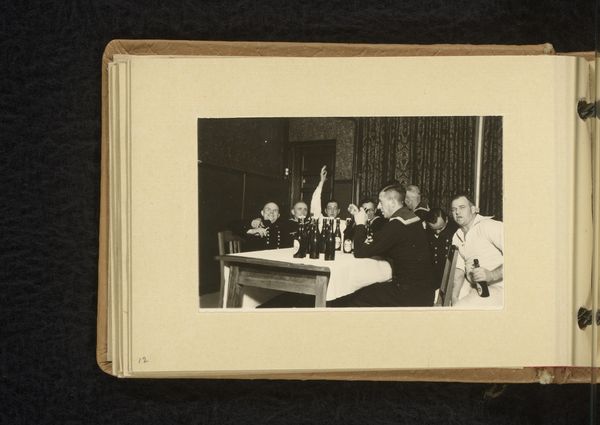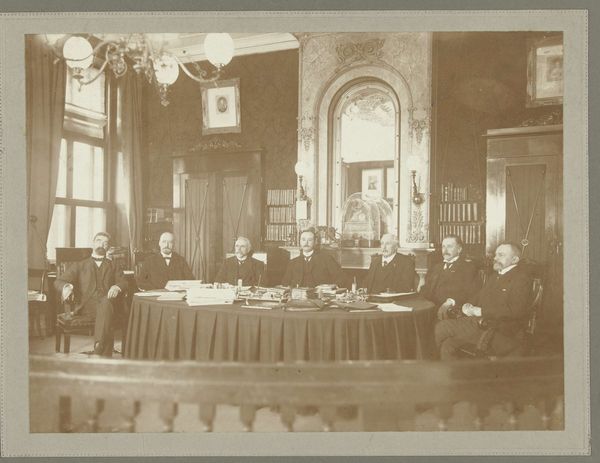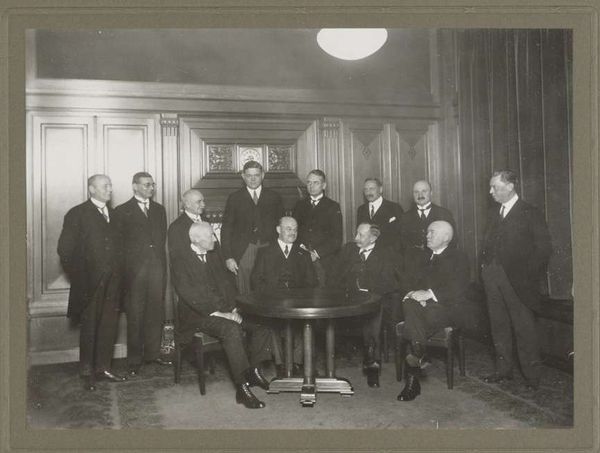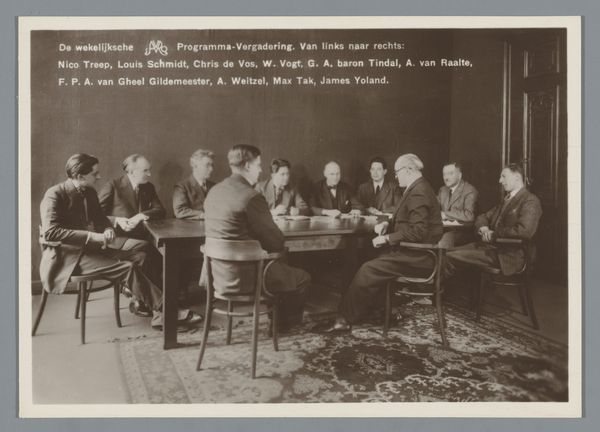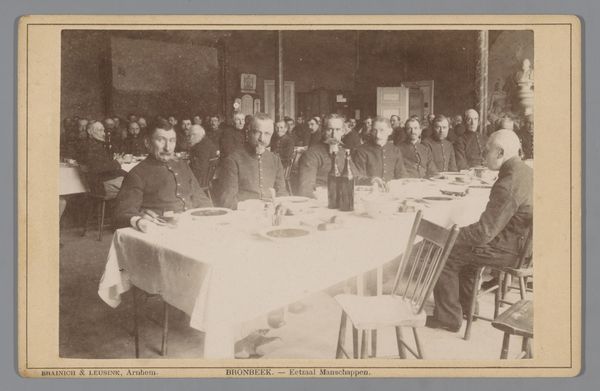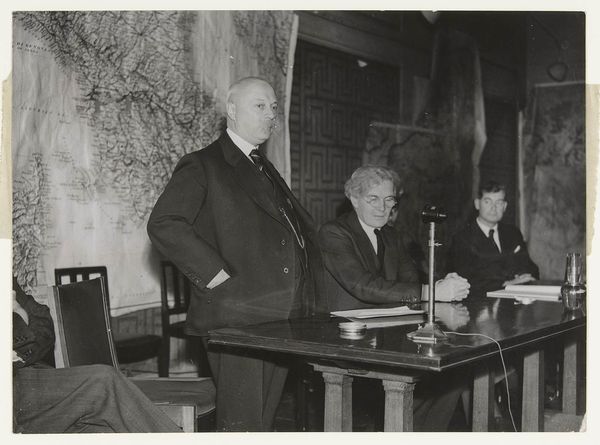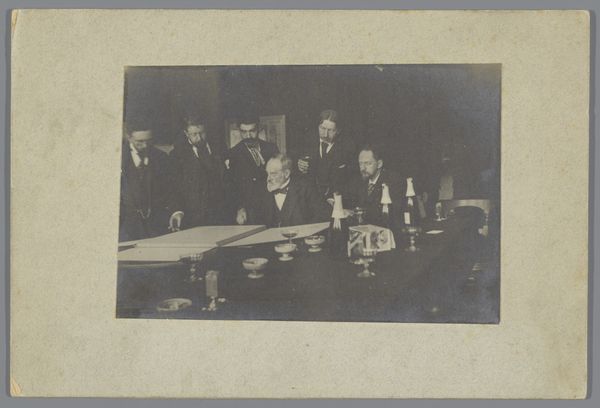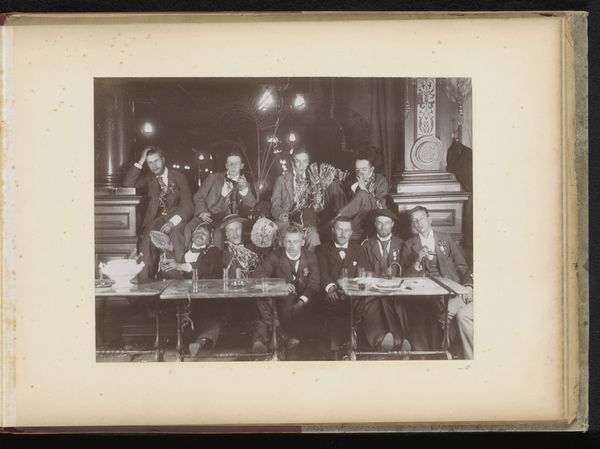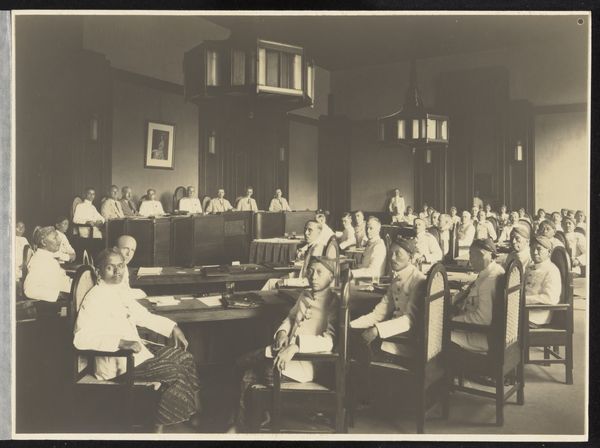
Veiling van de Gutenbergbijbel van Charles William Dyson Perrins bij Sotheby's te Londen 1947
0:00
0:00
#
print photography
#
wedding photograph
#
photo restoration
#
photo element
#
wedding photography
#
archive photography
#
historical photography
#
couple photography
#
photographic element
#
celebration photography
Dimensions: height 152 mm, width 206 mm
Copyright: Rijks Museum: Open Domain
Curator: This black and white photograph captures "Veiling van de Gutenbergbijbel van Charles William Dyson Perrins bij Sotheby's te Londen" (Auction of the Gutenberg Bible of Charles William Dyson Perrins at Sotheby's in London) in 1947, snapped by the Keystone Press Agency. The mood is incredibly solemn, almost reverent. It’s like witnessing a significant historical event frozen in time. What stands out to you? Editor: Well, the immediate thing is the materiality. The size of that book! And to imagine the labor, the actual physical process of creating something of that scale back in the 15th century—it’s astounding. Look at the posture of the person holding it; it emphasizes the weight, the value placed upon it. Curator: Precisely. And we can contextualize that value by thinking about access to information, particularly religious texts, during the Gutenberg era. The Bible's availability democratized religious interpretation in a way, challenging established hierarchies and paving the way for social reform movements. The sale of such an item in 1947 resonates with the post-war reconstruction of cultural heritage. Editor: Good point. The commodification of this particular book, this historical artifact, strikes me too. Auctioning the book at Sotheby's signifies the Gutenberg Bible’s transformation from religious text to a rare, marketable object. Consider the audience in attendance – likely elite collectors, wealthy investors, people capable of extracting value, both financial and symbolic, from such a rare artifact. Curator: Right. They are implicated in that power structure and historical narrative. Note, too, the photograph itself. The composition directs the gaze from the speaker and the book being presented through to the audience, creating a subtle hierarchy. The historical weight isn't simply within the book; it's being actively constructed and reinforced through the very act of the auction and its recording. The person holding it has almost disappeared within that process; he is a tool, a human crane displaying the goods. Editor: Yes, there's definitely a system of value at work, displayed through the printing of the text, the action within this event and captured on the photographic print itself. All made tangible through material means. Curator: It speaks volumes about our relationship to the past and how these objects carry historical baggage. It pushes us to question whose stories are being preserved, whose voices are amplified, and at what cost. Editor: Absolutely, thinking about labor, materials, consumption, and context certainly enriches our experience. I mean, just imagine the sheer amount of ink needed to print that thing! Curator: Exactly. Thank you, that's been a revealing glimpse into the layers of context that constitute art.
Comments
No comments
Be the first to comment and join the conversation on the ultimate creative platform.


